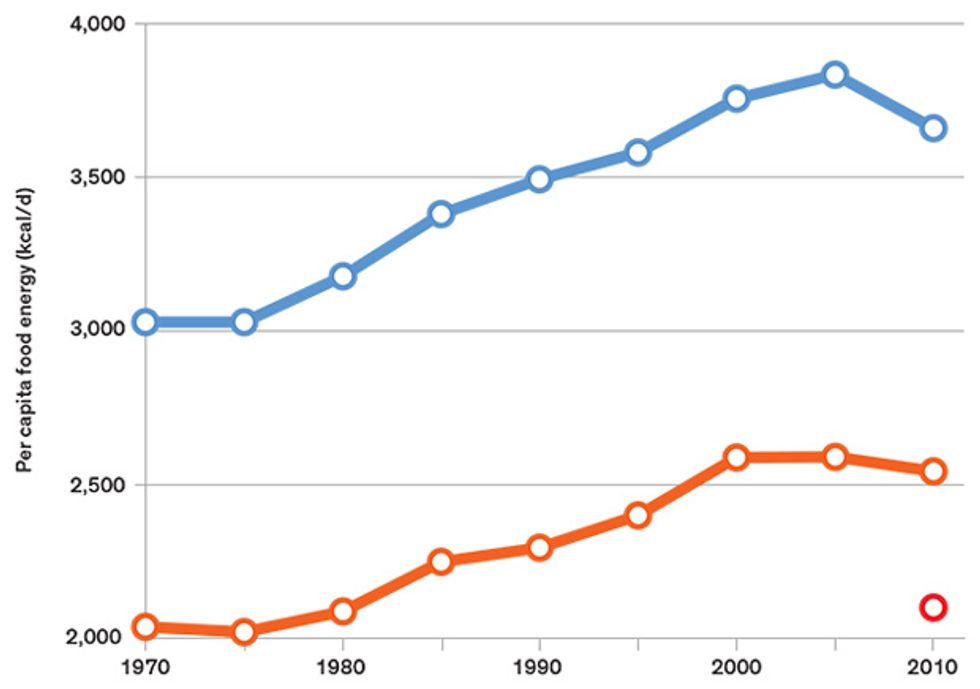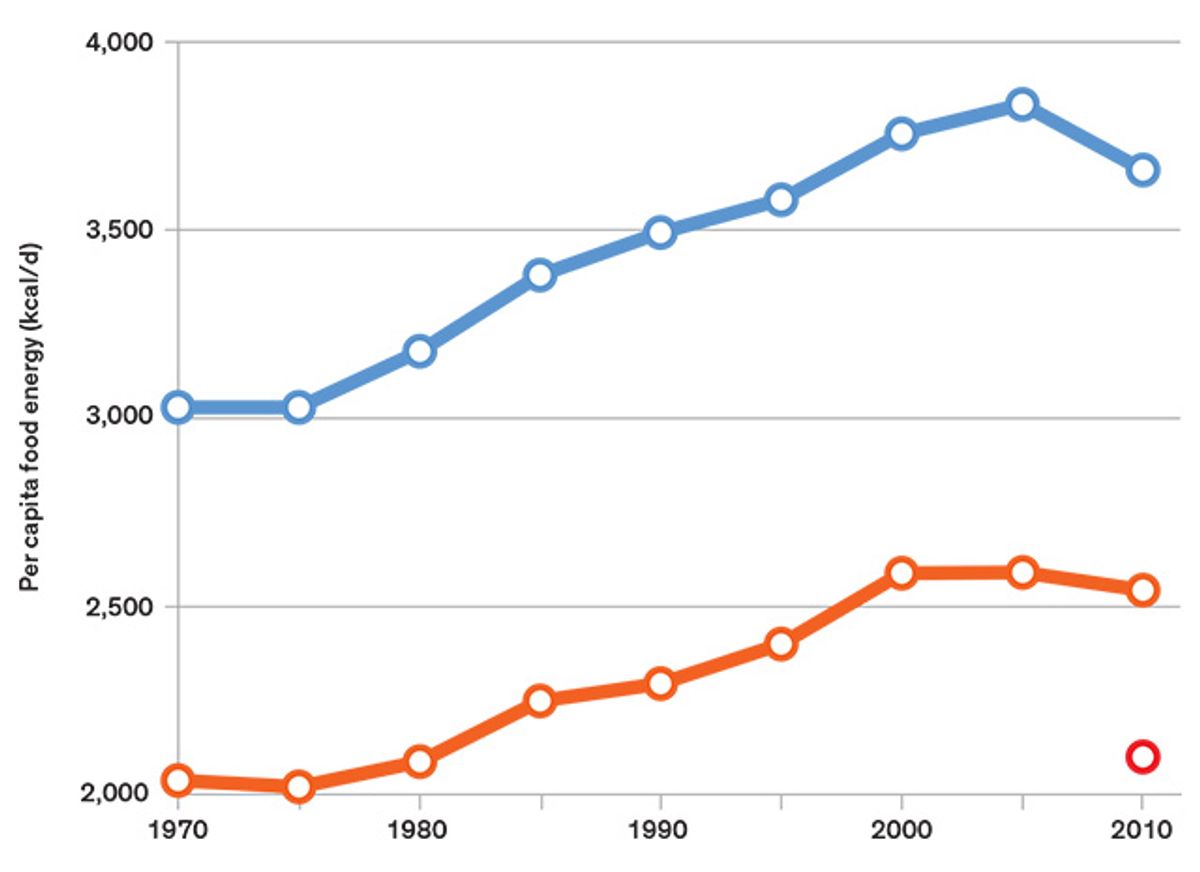
The food supply of the United States comes to a little under 3,600 kilocalories per person per day. That’s supply, not consumption—and a good thing, too.
Consider that if you omit babies and housebound octogenarians, whose daily requirements are less than 1,500 kcal, that would leave more than 4,000 kcal available for adults—a quantity appropriate only for a lumberjack. Americans may eat too much, but not that much. The U.S. Department of Agriculture (USDA) adjusts these figures for “spoilage and other waste” and puts the actual daily average at about 2,600 kcal per person. But even that isn’t quite right. Both surveys of self-reported food consumption (done by the National Health and Nutrition Examination Survey) and calculations based on expected metabolic requirements indicate that the actual average daily intake in the United States comes to about 2,100 kcal per person. Subtract 2,100 kcal in intake from 3,600 kcal in supply and you get a loss of 1,500 kcal, which means about 40 percent of our food goes to waste.
This was not always the case. In the early 1970s, the USDA put the average food availability adjusted for preretail waste at less than 2,100 kcal per day, nearly 25 percent less than what it is now.
The National Institute of Diabetes and Digestive and Kidney Diseases estimates that the United States’ per capita food waste increased by 50 percent between 1974 and 2005 and that the problem has gotten worse since then.
But even if the average daily loss had remained at 1,400 kcal per capita, a simple calculation shows that in 2014 (with 319 million people) this wasted food could have provided adequate nutrition (2,200 kcal per capita) to about 200 million people, or almost exactly the entire population of Brazil, Latin America’s largest nation and the world’s sixth most populous country.
This food loss inevitably entails a significant waste of energy that is used directly to operate field machinery and irrigation pumps and indirectly to produce the steel, aluminum, and plastics needed to make those mechanical inputs and to synthesize fertilizers and pesticides. The extra agricultural effort also ends up hurting the environment by causing soil erosion, nitrate leaching, the loss of biodiversity, and the growth of antibiotic-resistant bacteria.
Yet even as they waste food, Americans are still eating far more of it than is good for them. The prevalence of obesity—defined as a body mass index of 30 or greater—more than doubled between 1962 and 2010, rising to 35.7 percent from 13.4 percent among adults over age 20. Add to this number the merely overweight (a BMI between 25 and 30) and you find that among adults 74 percent of males and 64 percent of females have an excessively high weight. Most worrisome, as obesity is usually a lifelong condition, that proportion is now above 50 percent for children above the age of 6 as well.
In short, the United States needs to produce considerably less food and consume it with considerably less waste. And yet the mantra of higher food production is chanted as loudly as ever. Its most recent permutation is to produce more by eventually flooding the markets with fake meat made from altered legume proteins. Instead, why not try to find clever ways to halve food waste to a more acceptable 20 percent? Excessive food waste has become the norm in other high-income countries as well (only Japan keeps it at a moderate level), and for different reasons such waste is unacceptably high in many low-income countries with a barely adequate food supply. So cutting that waste in half would lead the way to a more rational use of food worldwide. When will less have more appeal than more?
This article appears in the February 2016 print issue as “Food Waste.”
